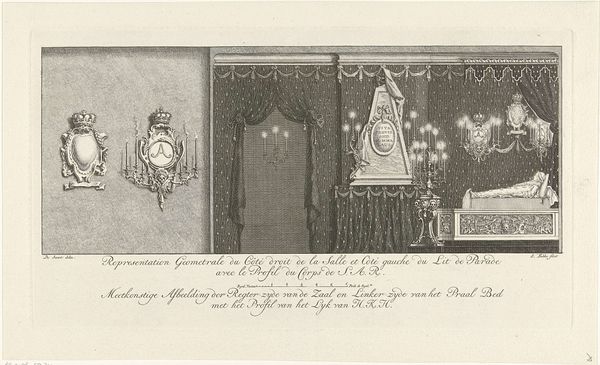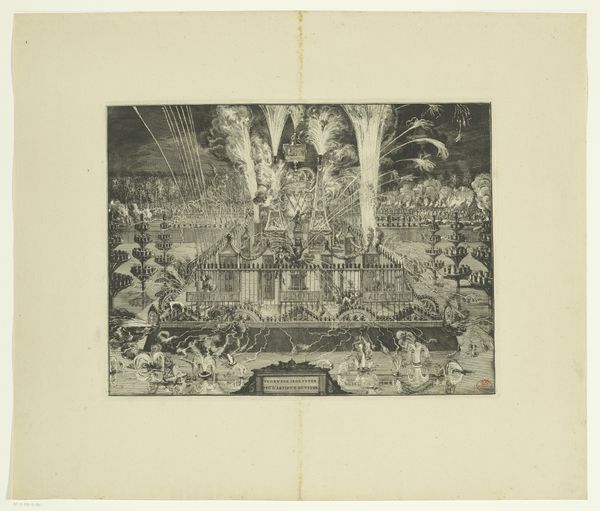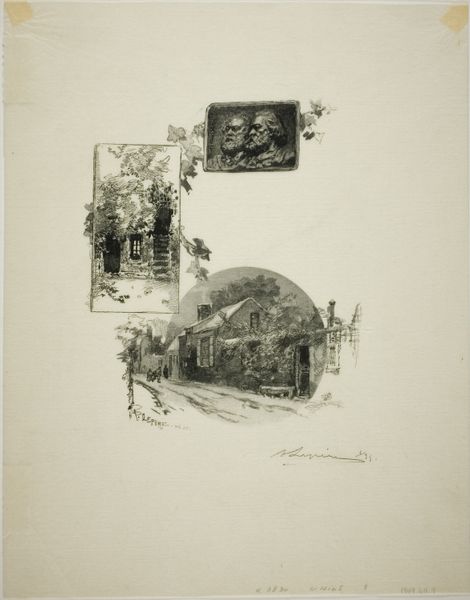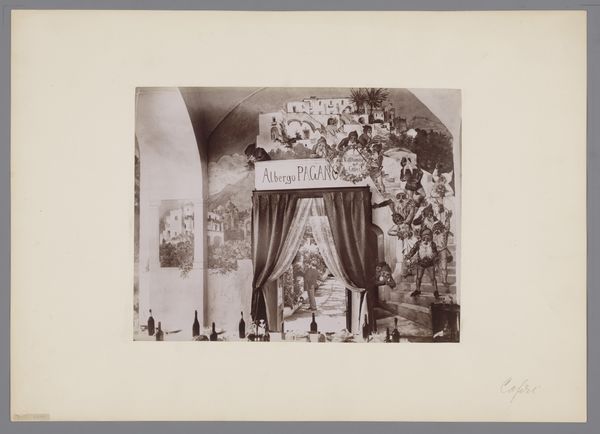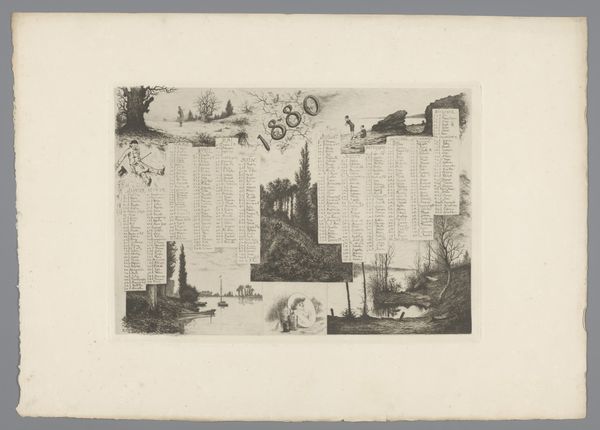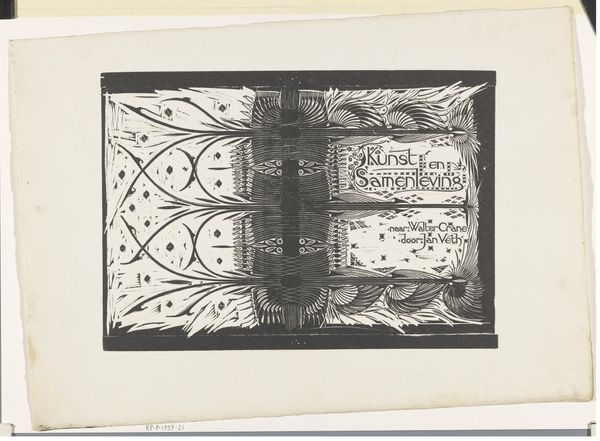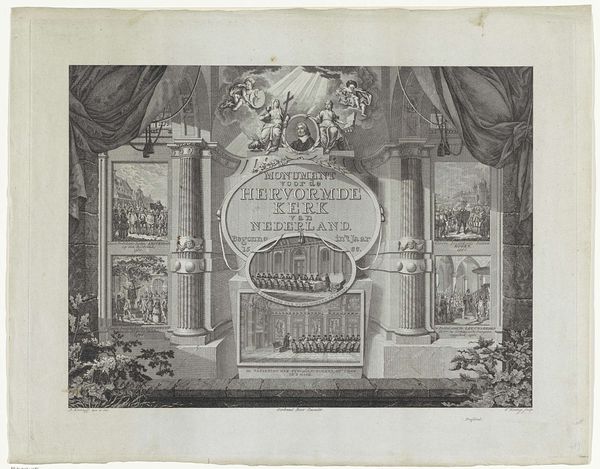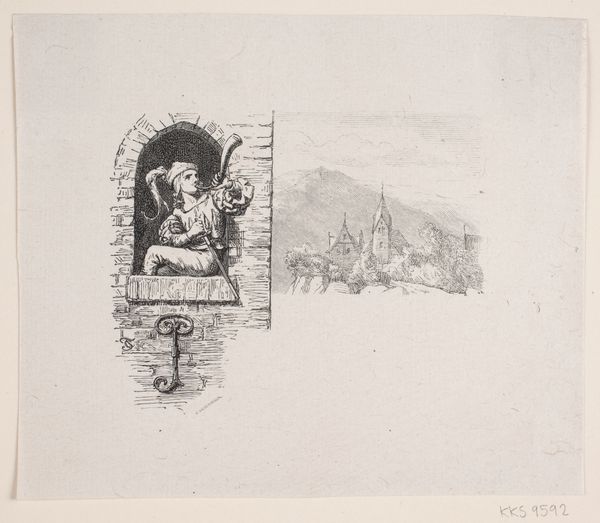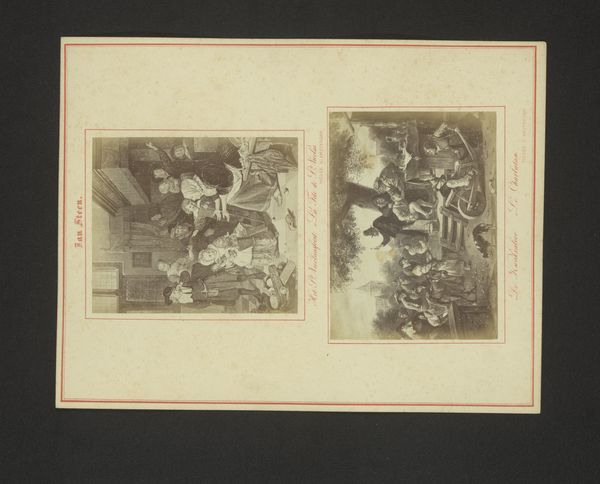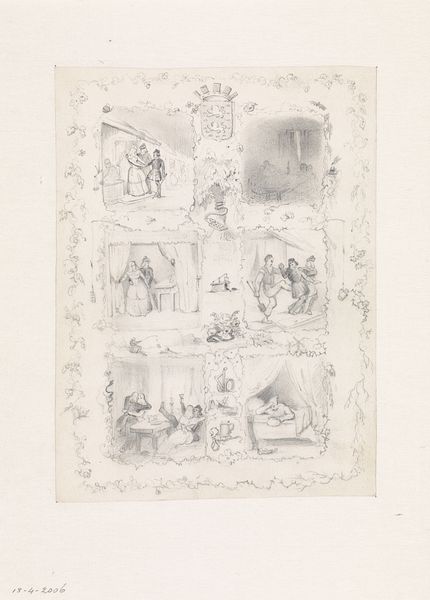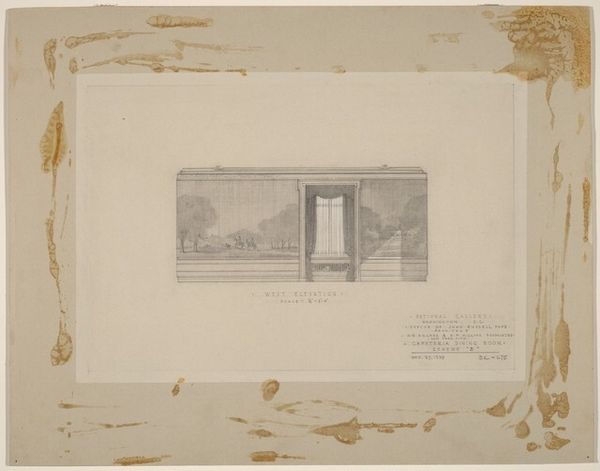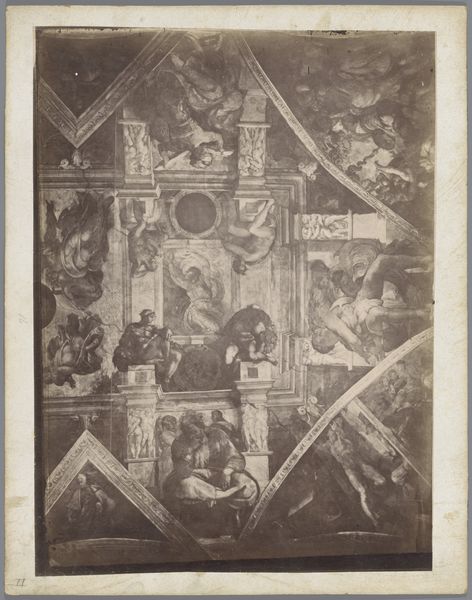
engraving
#
portrait
#
baroque
#
old engraving style
#
history-painting
#
engraving
Dimensions: height 297 mm, width 495 mm
Copyright: Rijks Museum: Open Domain
Curator: Ah, yes, this engraving by Jan Punt titled "Rechterzijde van de zaal met het praalbed van prins Willem IV, 1751," made in 1752. It resides here in the Rijksmuseum collection. Quite a scene, isn't it? Editor: Strikingly sombre! All that monochrome detail focused on the pomp and ceremony surrounding death. It's a very Baroque sensibility—embracing drama, albeit of a decidedly mournful kind. Curator: Absolutely. Jan Punt captures the wake of Prince William IV. Think of it as a meticulously staged production. Every detail, from the wall sconces to the heavily draped emblems, signifies status and loss. Death became another performance. Editor: A fascinating blend of intimacy and spectacle. It feels so incredibly staged! The lighting is curious too—those radiant sconces feel like beacons of a past era, stubbornly clinging to antiquated traditions. Curator: Exactly! The elaborate bed itself becomes a stage. The precision of the engraving, almost architectural in its detail, lends an air of official record-keeping, but filtered through baroque sensibilities and heavy politics. This wasn't just a death; it was a political event. Editor: Which speaks to how art could function as a sort of public relations arm of the monarchy back then. Ensuring the grandeur and significance wasn't lost on the populace, crafting a narrative, if you will, using sorrow as a key ingredient. Curator: Indeed. This engraving, beyond documenting an event, projects a certain image of the Dutch royal family, emphasizing power through this carefully orchestrated display of mourning. The engraving likely reached a wide audience, solidifying their position in the public consciousness. Editor: It does provoke consideration of our modern relationship to mourning the famous or powerful, how much is spectacle and how much authentic emotion, even now. The contrast in styles, as with its almost blueprint style, amplifies how formalized grief had become at this time. Curator: Well said. The image persists, serving as a potent reminder of how art can embody history, tradition, and power intertwined. Editor: Leaving me with a somber sense of how carefully cultivated public image has always been, and perhaps always will be. A stylish, somber staging, beautifully captured.
Comments
No comments
Be the first to comment and join the conversation on the ultimate creative platform.
